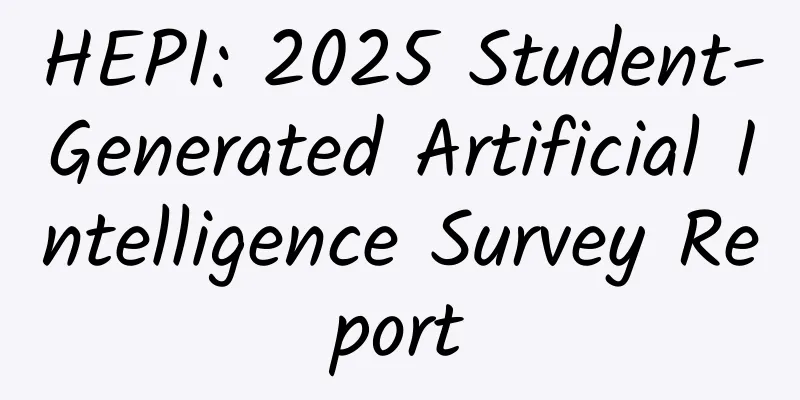[Recommended by Zhihu] Those Android development tools that you can’t stop using
![[Recommended by Zhihu] Those Android development tools that you can’t stop using](/upload/images/67ebe8a2e11b5.webp)
|
For many Android developers, developing an application with network functions is not an easy task. Not only do they need to purchase and rent servers, but they must also master a server development language such as Java, .net, and php. Every time you develop a mobile application, you must develop and maintain the corresponding server program. All of this is a lengthy nightmare for mobile developers. Now there are many platforms that allow developers to simply register an account, apply to create any number of databases after success, obtain the corresponding key, download the corresponding version of the SDK and embed it into the mobile application, and then call the access API to perform any data operations. In this way, there is no need to pay attention to the background and you can focus more on client development. The editor has compiled some development tools that developers regret not meeting earlier. I hope these tools can make you happy and let you fly. The following are the categories of tools: View Android source code online, especially for those who have not downloaded the source code and need to view the implementation of a specific version GrepCode.com (all versions of Android source code and other famous project codes, such as Eclipse, JDK) AndroidXRef (same as above) Sample code search. What if you don’t know how to use the API? Just search for examples and find sample codes from millions of sources. Great Code Examples & Snippets https://searchcode.com/ Android trends, find out what people are using recently and which projects are popular Android Weekly Trending Java repositories on GitHub today · GitHub Android Knowledge Points Home | CodePath Android Cliffnotes provides introductory tutorials for various knowledge points Text Editor 1. ATPad Designed for developers who prefer a text editor to a full-blown IDE, ATPad offers a tabbed environment, line numbering, bookmarks, a code snippet system, unlimited undo/redo, and more. Supported operating systems: Windows. 2. CodeMirror CodeMirror is a JavaScript-based text editor that can be embedded in a web browser. It supports more than 90 languages and has auto-completion, code folding, bracket and tag matching, and more. Supported operating systems: Independent of the operating system 3. Emacs Generations of developers have used Emacs to write code since the 1970s. It offers context-sensitive editing, syntax coloring, full Unicode support, customization capabilities, and a vast library of plugins. Supported operating systems: Windows, Linux, and OS X 4. jEdit This Java-based text editor supports more than 200 programming languages. It includes a built-in macro language that provides hundreds of pre-written macro commands and plug-ins. Supported operating systems: Independent of the operating system 5. Notepad++ Notepad++, based on Scintilla, was updated earlier this month with the new Ghost input feature. Other features include syntax highlighting and folding, customizable GUI, document map, auto-completion, tabbed interface, WYSIWYG printing, bookmarks, macros and more. Supported operating systems: Windows 6. TEA This fast, cross-platform text editor claims to have hundreds of supported features. Despite being small, it includes a spell checker, tabbed layout, syntax highlighting for dozens of languages, support for code snippets and templates, bookmarks, a calendar, and more. Supported operating systems: Windows, Linux, and OS X 7. Textmate This Mac-only text editor claims to bring code and markup into the 21st century. Note: This is an open source tool, but it's not necessarily free; commercial licenses are sold on the site. Supported operating systems: OS X 8. Vim Vim is a mature text editor with many die-hard fans and a long-time rival of Emacs. It is easily configurable and is sometimes called the "programmer's editor" because it has many of the features of a standard IDE. It is charity software, so people who use it are asked to donate money to an organization that helps poor children in Uganda. Supported operating systems: Windows, Linux, and OS X 9. XML Copy Editor This fast and lightweight editor is designed for one task: writing valid XML code. Features include syntax highlighting, folding, tag completion, spelling and style checking, and import and export from Microsoft Word. Supported operating systems: Windows and Linux Image Processing Android Asset Studio is very convenient for simple image processing and finding some icons. No need to go to the platforms directory to look for icons anymore. Save the English scumbag Although I am not good at English, Stack Overflow has saved me many times. I found answers to several very troublesome problems on it. Material Design, the translated Material Design design language specification, helped me, whose English is poor, and I read it several times. detail Here are some useful tools and tips from some small aspects of development: 1. Quickly take screenshots of your device and save them to local storage. Frequent use, convenient and fast.
2. If you are like me, you may need to connect to multiple Android devices at the same time during development, then the default adb command is not very comfortable to use (you need to use -s to specify the serial number). For this purpose, someone wrote a Shell script, and I wrote a Python script based on it to add highlighting and filtering functions. The effect of use is this: 3. Logcat color script written by Jeff Sharkey and pidcat written by Jake Wharton. The effects used are: 4. WiFi ADB - Debug Over Air Sometimes the wireless adb method will be used. Root is required. 5. Use adb backup to get the database and other files without root. See Random Stuff: Access Android app data without root for the method. I'm afraid not many people know this method, but it is very useful sometimes. 6. Sometimes it is not convenient to connect to a computer and you need to view the database directly on your phone. At this time, software like SQLite Editor comes in handy. Root is required. 7.DebugLog, a very simple Lib project, can help developers to a great extent. It can automatically print out the method name and line number when printing the log. other Google, try using the English version of Google and using English keywords, you may find better solutions than Chinese ones To bypass the firewall, I recommend Shadowsocks, which can be found for free online. But if you need to log in to an account, it is best to buy one. The cheapest paid version from Bandwagon Host is only $3.99 (RMB 25) a year, which is enough for one person. @Melody Fantasy reminded me that this version has been sold out, which shows how popular it is. The cheapest one is Bandwagon Host, which costs $9.99. The configuration information is "HDD: 5 GB SSD RAM: 512 MB CPU: 1x Intel Xeon BW: 500 GB/mo Link speed: 1 Gigabit". |
<<: iOS: How to draw a 1 pixel line correctly
>>: Zen and the Art of Objective-C Programming: Exploring Zen Cultivation from Writing Details
Recommend
Android Wear isn't perfect yet: Nine things Google needs to fix right now
Android Wear isn't perfect yet: Nine things G...
How to operate and promote activities without money?
Event operators often face the embarrassing situa...
Google domain name registration, Google SEO optimization, the difference between new domain names and old domain names!
The difference between Google SEO optimization ne...
GPU temperature is too high during deep learning training? Enter these few lines of commands to quickly cool it down
[[197022]] The temperature of the newly purchased...
Enrollment marketing strategy skills for educational institutions!
In 2020, due to the epidemic, the enrollment path...
SAIC has established a commercial vehicle intelligent driving technology innovation company. Autonomous driving will be first implemented in ports, factories, and trunk logistics scenarios
(August 26, 2021, Shanghai) SAIC Motors announced...
The fifth one belongs to China, it will depart in 2025, with the goal of shocking the sky!
For a long time, the Earth had only one natural s...
Xinzhu "30-day hand-painting training camp: Become a hand-painting master even with zero basics"
Xinzhu's "30-Day Hand-Painting Training ...
7 mistakes in app user acquisition and 7 ways to avoid them
Exploring mobile applications is not an easy task...
Song Boxan, a traditional Chinese medicine practitioner from Linglan, wrote "Zhang Xichun's 52 Effective Prescriptions and the Secret Method of Seeking Truth"
: : : : : : : : : : : : : : : : : : : : : : : : : ...
The high-end tablet instantly turns into a thermal imager
Usually when we review a product, we will have a ...
Lollipop changed the world: Five things Android 5.0 will change
On October 15th, Pacific Time, Google officially ...
Brain-burning interview, but very FAST
As a technology worker What is the most important...
The story of Internetization has come to an end. How can TV manufacturers survive in 2018?
Because of the collapse of the Internet TV concep...
WeChat launches "Send Now Pay Later" service: courier picks up and leaves without waiting
I sent a courier on WeChat and made an appointmen...









